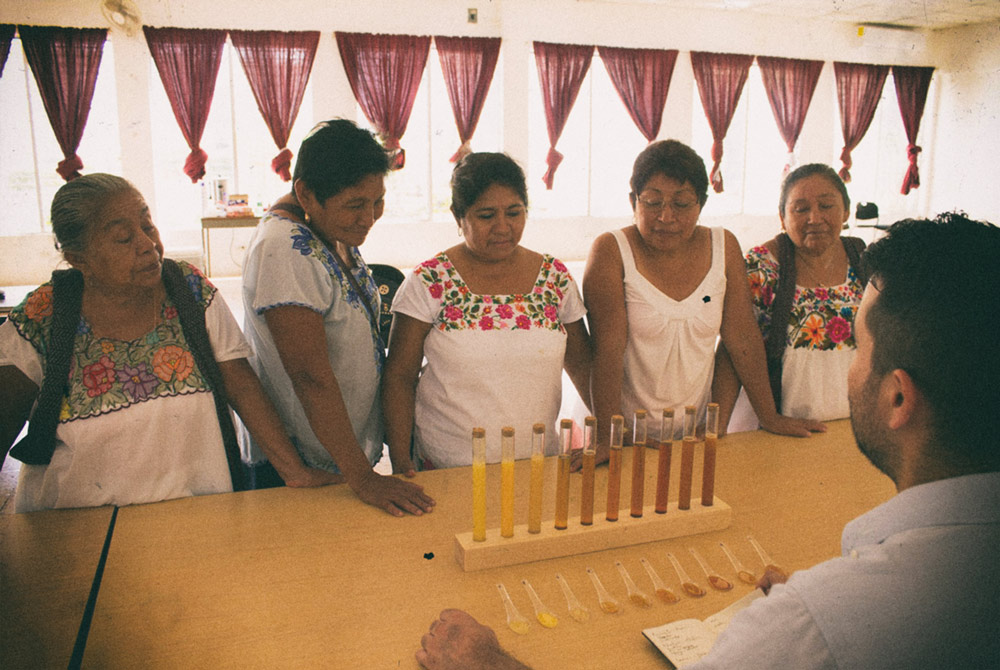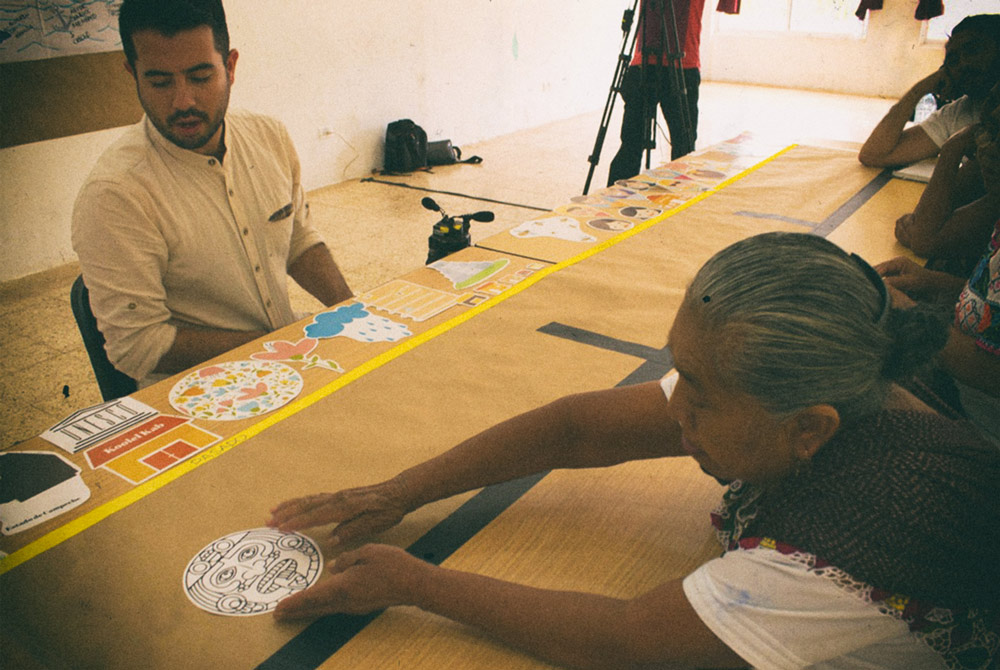Christian Vivanco On Participatory Design Approaches Creating Positive Social Impact In Mexico
Christian Vivanco is a designer with 10 years professional experience, working and being exhibited in cities like Milan, Barcelona, Paris, New York and Tokyo, among other design capitals. In 2009 he got selected by Wallpaper as the first Latin American designer to join its Graduate Directory, an annual publication which sets out the most promising emerging young designers.
Currently he runs an industrial design studio focused on projects around product, furniture, and lighting design, with a profile based on an anthropological approach and the study of the existing dialogues between product and society. He also works as Strategic Design Manager at Industrias Ideal.
While Christian was Head of the Industrial Design Department at CEDIM University (Monterrey, Mexico) he developed research projects on collaborative design processes in the development of handcrafts, together with craftpeople and artisan communities in Mexico, with a broader focus of creating positive social impact.
Christian shares his experience, thoughts and examples of using participatory design approaches to create positive social impact in Mexico.
Highlights from the interview (For full details, listen to the podcast)
[Tom Allen] - Christian, could you please share a bit about your background in design and more recently in education as well? [1:54]
[Christian Vivanco] - {Christian explains how he started with a traditional product design profile, graduating in Mexico and then in Barcelona. His initial focus was on furniture, lighting and accessories. In recent years, Christian got involved in design education and was Head of the Industrial Design department at CEDIM University in Monterrey where he lead a number of projects with a participatory design focus with Mexican craftspeople. He also works as a Design Strategist at Industrias Ideal and Consultant with a growing passion in social innovation.]
What is it that drives you and why is it that you have started to participate in more projects around social innovation? [5:03]
At the beginning I was more interested in the product itself, but eventually I started to learn that what was really motivating me wasn't the product, but the people around the product.
A design project can have a huge impact in how people live their lives and how you can improve or make it worse if you are not careful enough.
What motivates me is the feeling of knowing that something you work on can be taken by a group of people and become something bigger and better for them.
The Melipona Bee
Could you tell us more about the projects you were doing at CEDIM and share some case studies? [06:23]
Last year (2015) we began work with UNESCO in a state of Mexico called Campeche. We began work with a group of women that had been working with Melipona Bees, which produce a honey that has great characteristics for the medical and cosmetic fields. This particular group of women from a Co-operative fought Monsanto who were working hard to expand into Campeche. The bees health (and their business) depended on a healthy environment and they won the fight against Monsanto. UNESCO saw the opportunity to invest in what they were doing and approached CEDIM to help with the project. We started work with this Co-operative with a collaborative and human centred design approach to help them confront present and future challenges. [Christian explains a lot more detail in the podcast about how they grew the project, creating social impact and how instead of bringing the honey to the customer, they took the customer to the honey.]
UNESCO + Campeche
Could you please tell us more about what that participatory design approach entails and whether there any particular social issues and challenges in Mexico which you think could be addressed with it? [17:09]
We started working with Cemex (one of the large global cement companies), with a disadvantaged community that had been managing waste in area, looking for a way to find them better quality housing and social business opportunities.
Initially our project looked at finding the needs and desires of the community which uncovered some interesting insights. Cemex then requested them to develop concrete products that could be produced by the women in the community who had no previous experience with this type of production or material. These products were intended to be in the most high end stores in Mexico with the objective of reaching a high profit margin. 100% of the profits were returning to the community. [Christian goes on to talk about the challenges they faced and how the project unfolded].
Collaborative Design Workshop, The Cemex Project.
What sort of outcomes has the community seen with the Cemex project? [30:02]
By 2017, Cemex is aiming to begin distribution of the products with forecasts showing high economic returns for the community.
You believe there is a boom of social innovation happening in Latin America, could you please tell us more about that? [32:28]
I believe that something is going on here, because we have the perfect storm going on, we have the perfect kind of issues which stimulate disciplines like design to get involved with society and to believe that we can make a change to improve people's lives. These kinds of projects are going on in Mexico, focussed on communities and particular sectors of the society on warranty that every project they do will have an impact on society.
I made a trip to Lima, Peru (invited by Allpa) to run a workshop and talk at a conference (the first craft and design encounter in Peru) and they have an amazing project which has been running for 35 years. The project focusses on how they can help the artisan communities grow without disrupting the community negatively. [Christian goes on to explain more about Allpa.]
I also met Sofia Hott (Bordadoras de la Isla Negra) who is doing an interesting project with a remote community reusing sacks to create products and artwork.
There are a lot of projects going on in Latin America.
It's interesting because this chaotic social context which is always in motion, inspires you as a designer to do something different and to try to make a change in people's lives.
Cemex
Recently you moved back to Mexico City. Have you come across any inspiring projects or initiatives recently which are creating positive social change? [38:50]
There are many going on. The Fabrica Social project works with local communities near Mexico City to provide design education to co-operatives run by women to allow those groups to get government grants to develop small production systems for textiles. Fabrica Social have a commitment to buy the designed textiles and absorb the responsibility of closing the gap where typically the craftspeople don't have the knowledge to distribute and sell the products.
Biyuu produces carpets and in a similar social model, there is also Diario Shop run by Moises Hernandez who develops small products with communities around Mexico City using their production methods.
To finish off, are there any inspirational books or great resources that you could recommend to our listeners? [42:08]
I'm not that interested in reading design books or lectures as I try to get inspired by other kinds of inputs. [Christian explains more about the Wild Detectives (Los Detectives Salvajes) and how it's been inspiration to him.]
UNESCO + Campeche
Initiatives, resources and people mentioned in the podcast
- CEDIM
- Allpa Peru
- Colectivo 1050°
- Fabrica Social
- Biyuu by Marisol Centeno
- Bordadoras de Isla Negra
- Diario Shop run by Moises Hernandez
- Los Detectives Salvajes by Roberto Bolaño










